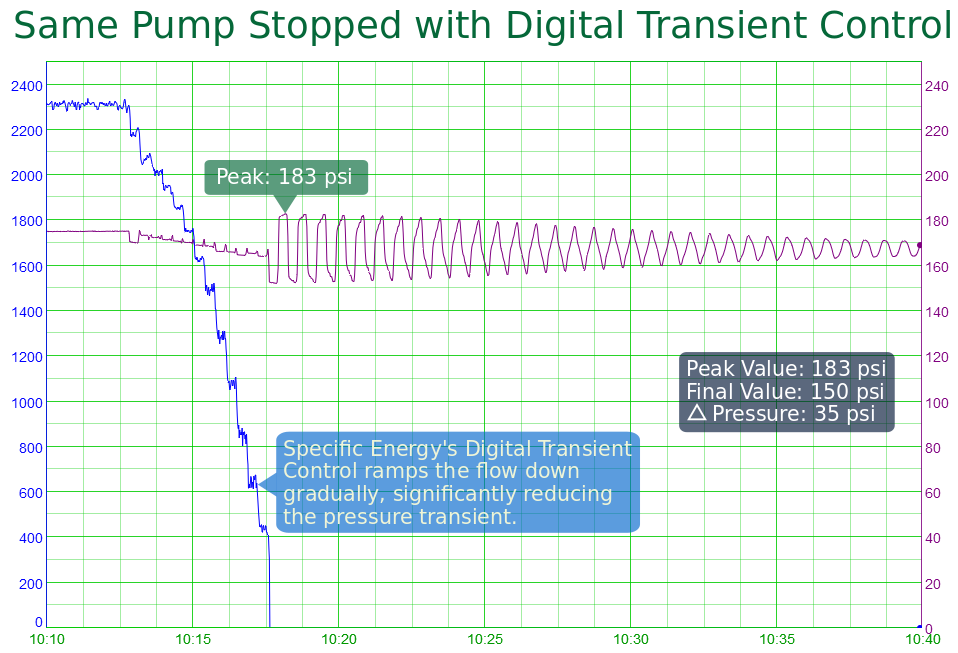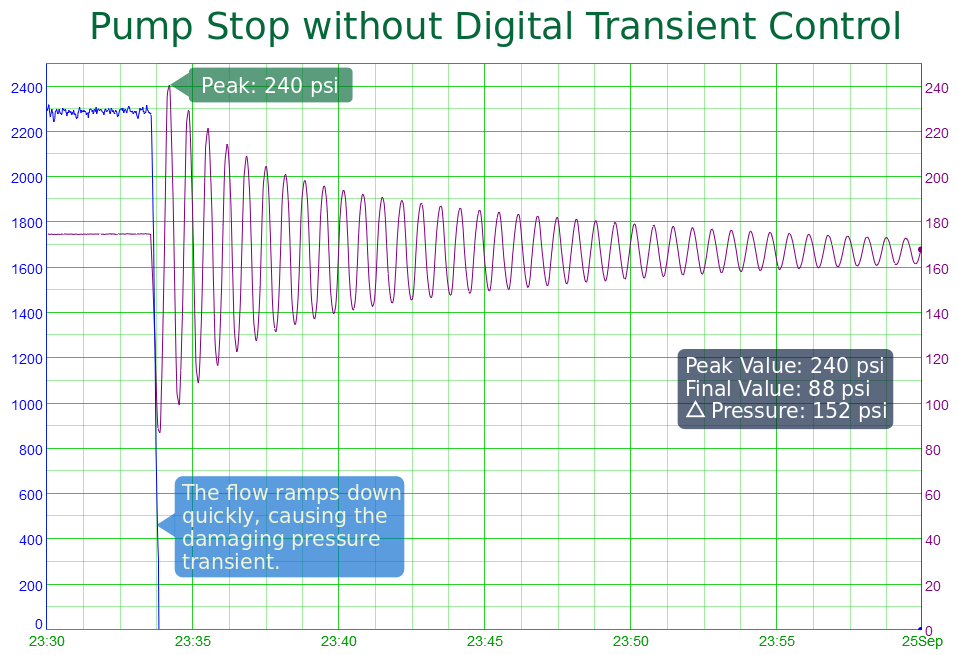Reducing Leaks with Dynamic Pump Optimizer
Leaks are a persistent problem for water utilities. In addition to the cost of lost water, a typical water utility spends about 30% of its operating budget repairing leaks. Nearly all line breaks occur during a pressure transient event.
Giving your pipes a comfortable ride
We all know that jumping in the car and slamming on the accelerator or the brake every time you start or stop is hard on your car and highly inefficient. However, many pump stations are run this way. The Dynamic Pump Optimizer (DPO) smoothly transitions your pumps to virtually eliminate pressure transients during stops, starts, and speed changes. Also, the DPO leads to operating fewer pumps over long runs, reducing large-scale pressure fluctuations.
Smoothly operating your pump station will not only reduce repair and maintenance costs, but will also reduce energy consumption.
Digital Transient Control
The figures below illustrate the difference that digital transient control can make in your pipe infrastructure. The first figure shows trends of the flow (in blue) and pressure (in purple) for a pump station where a pump is turned off without Digital Transient Control. The second figure shows the same pump stopping under Digital Transient Control.
Without Digital Transient Control, the difference between maximum and final values is 70 psi. With Digital Transient Control, the difference between maximum and final values is only 13 psi.
Digital Transient Control not only reduces the maximum pressure excursion, it also reduces the rate of change of the pressure. Both of these reductions are beneficial to the health of both pumps and pipeline.


Without Digital Transient Control, the difference between maximum and post-transient pressure values is 70 psi. With Digital Transient Control, the difference between maximum and final values is only 13 psi.
Digital Transient Control not only reduces the maximum pressure excursion, it also reduces the rate of change of the pressure. These reductions are beneficial to the health of both pumps and pipeline.